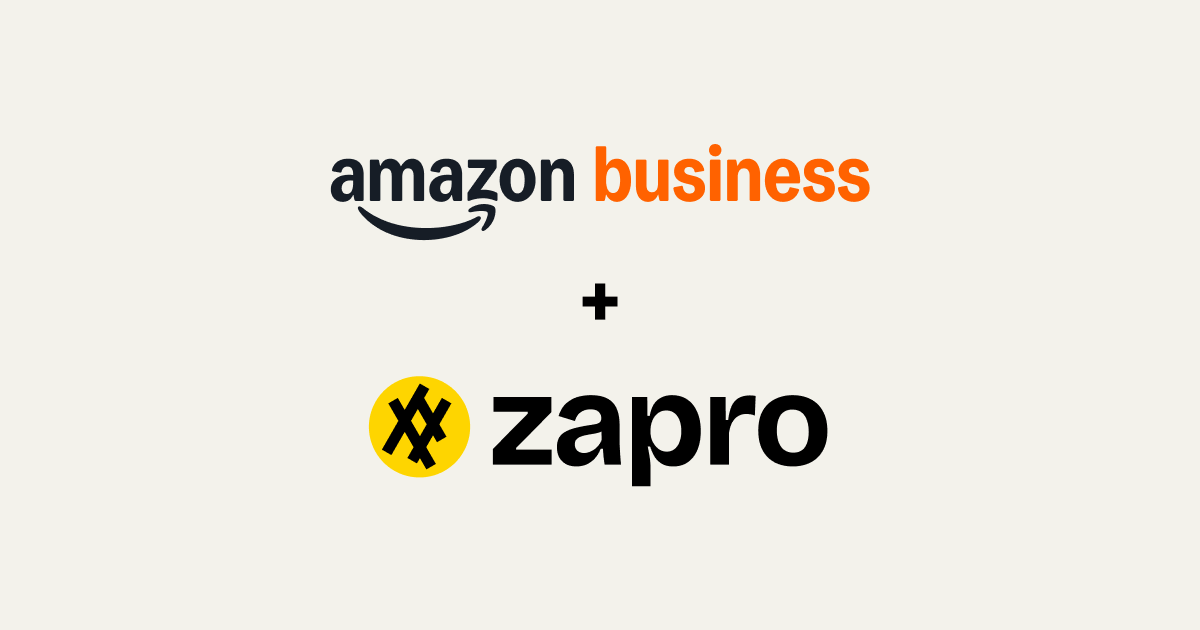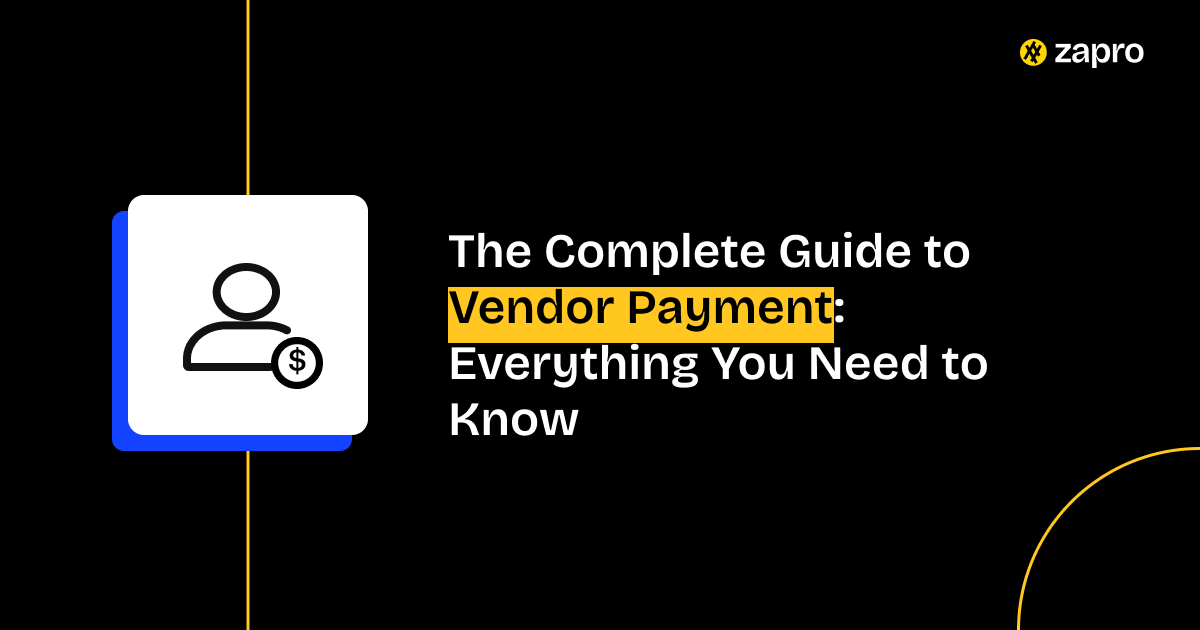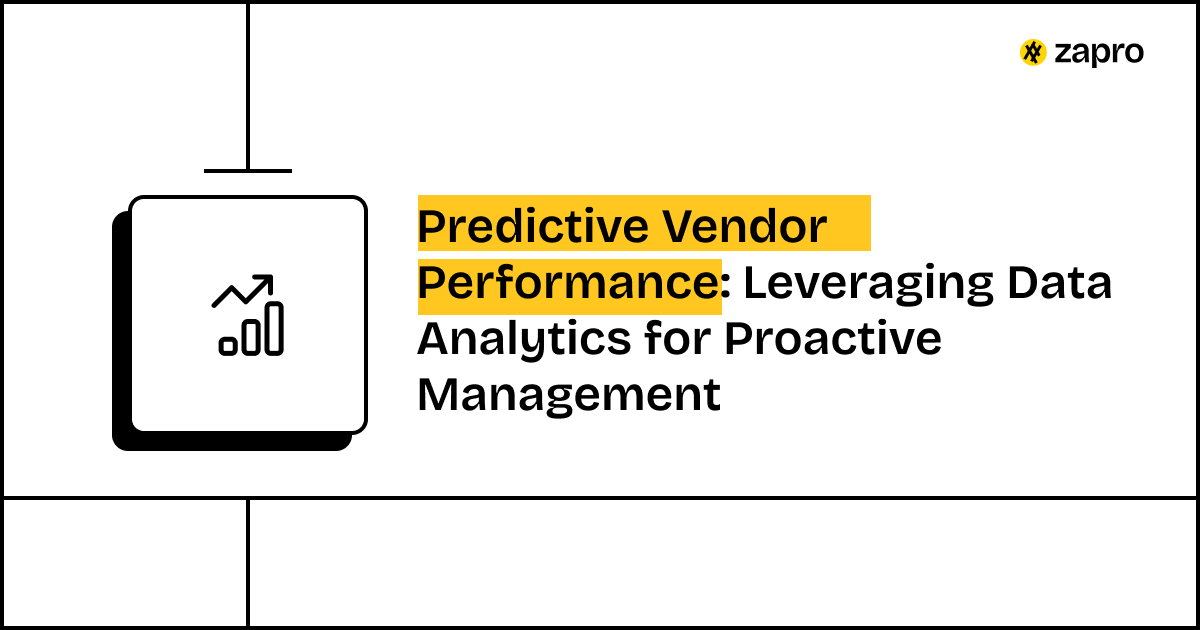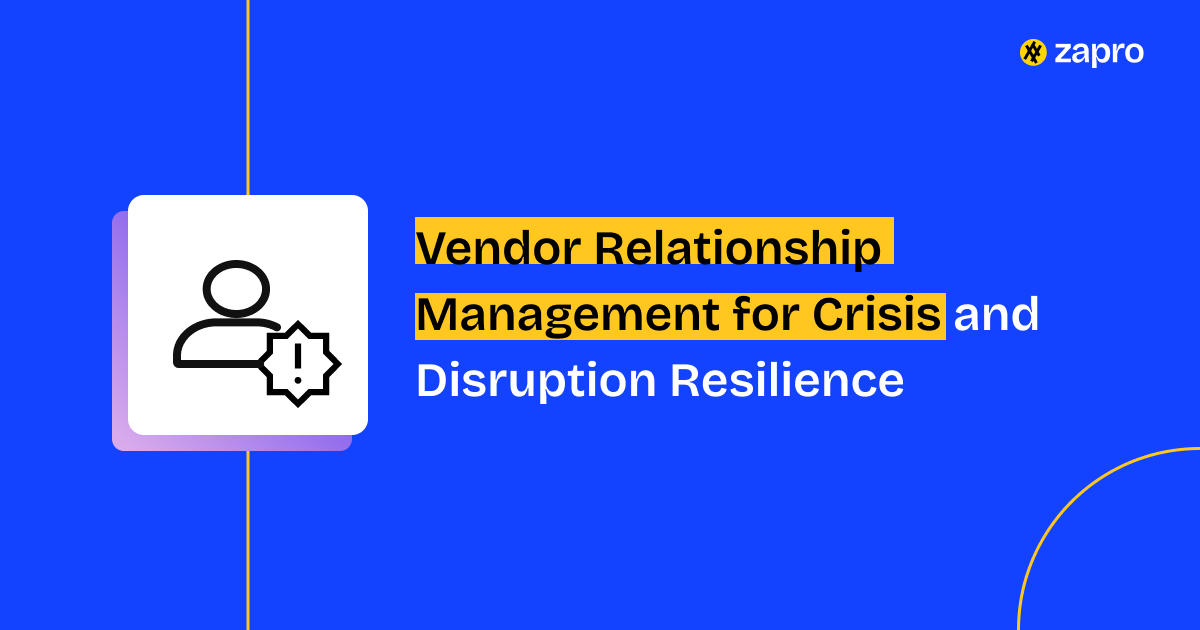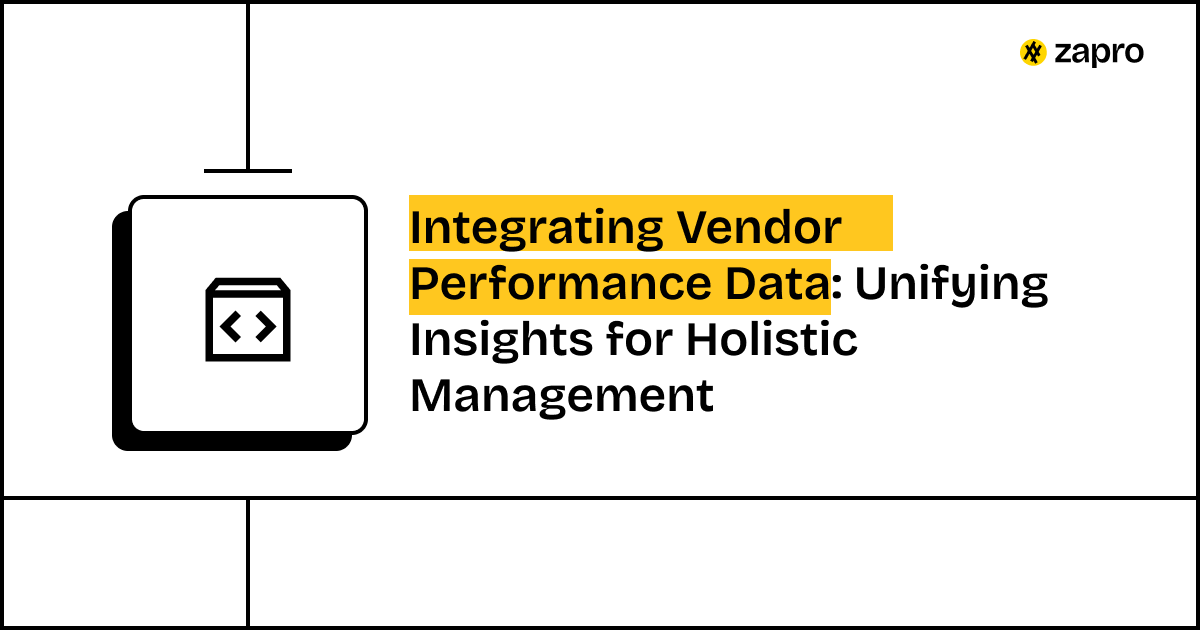The vendor payment process is a financial workflow that includes invoice receipt and validation, approval routing, payment scheduling, disbursement through methods like ACH, wire transfer, or check, and reconciliation with accounting records. Manual vendor payment processes using paper invoices and email chains typically take 7-14 days and are prone to errors, late payment penalties, and damaged supplier relationships. Automated vendor payment systems like Zapro, Bill.com, SAP Ariba and Coupa reduce processing time by 80%, enable early payment discounts, improve cash flow visibility, and ensure compliance through digital audit trails and automated three-way matching.
What Is Vendor Payment?
The payment made to a vendor by a business for the services or goods received is called Vendor Payment. This is the final step in a transaction; the amount agreed is either transferred or paid by other means in exchange for a completed order. Vendor payment meaning is related to the “accounts payable” function, the process of managing all of a company’s financial obligations to its suppliers.
So, what are vendor payments, and why vendor payments matter so much? In simpler terms, vendor payments play an important role in the supply chain. To bolster the relationship with vendors, it is essential to pay vendors on or before the agreed date and time. This matters the most because when vendor payment processing is smooth, it generates a sense of trust and reliability. This also guarantees a steady flow of supply of goods and services. When the vendor payment management is improper, it leads to strained relationships and, at times, damages forever. Simply, how you pay your vendors is a direct reflection of your business’s health and reliability.
Vendor Payment Options
Today, there are a different vendor payment options, and a few companies still cling on to the traditional methods. Whatever the line of approach you choose to make a vendor payment, ensure it is done on time, guaranteed with safety and security. Here are a few ways that is followed in the modern world:
How Do Vendors Get Paid
Pay vendors management software through one of these methods supported by a centralized vendor payment management system. It would help you keep a track, make payments on time and align with your business protocols effortlessly.
| Vendor Payment Option | Description | Pros | Cons |
| Bank Transfers (ACH/Wire) | Direct electronic transfer of funds from your bank account to the vendor’s. | Highly secure Good for large payments Provides a clear audit trail | Slow for international wires Requires manual setup May involve fees |
| Checks | Traditional, paper-based method of payment. | Simple for small businesses Provides a physical record | Very slow Vulnerable to fraud Manual work (printing, mailing, reconciling) Risk of being lost |
| Credit Cards | Paying a vendor using a company credit card. | Fast and convenient Provides a digital record can earn rewards points | Vendors may charge a transaction fee Not preferred for large transactions |
| Digital Wallets / UPI (India) | Modern, instant payment methods common in many regions. | Instant Mobile-friendly Secure Low-cost | Not all vendors accept May have transaction limits |
| Automated Payment Platforms | Centralize and automate multiple vendor payment methods in one system. | Combines all options Automates approvals & reconciliation Reduces fraud Real-time visibility | Requires initial setup May include service costs |
Challenges in Vendor Payment Management
Without the right tools, vendor payment management can be a tedious task that gives you a headache. Numerous businesses, invariable of their size, report challenges pertaining to pay vendors, that are quite similar.
Late Payments Damaging Vendor Relationships
Pay vendors after the agreed dates; from then on, it is going to take a toll on the relationship and everything would start moving slowly for your business. The essence of trust and reliability is lost; timely vendor payments are the key to success.
High Manual Workload
In the traditional method, vendor payment processing is always slow because the manual process depends on entries, approvals, and reconciling invoices. The high manual workload can be diverted to something more strategic work if a vendor management platform is put in place.
Compliance & Audit Risks
It is a difficult task to maintain clear audit trail, when a business uses the old method that implies a lot of paper work. No wonder this leads to compliance risks and confusion during an audit.
Fraud & Security Concerns
Manual tasks are open to fraud as it is easy to fake paper checks and email-based invoice approvals. The security breach can cost heavily.
Lack of Visibility Over Cash Flow
Manual vendor pay methods have proved to be risky and you cannot get a real-time view of your financial obligations. This makes it difficult to stick on to budget-friendly spending and manage cash flow.
Learn about vendor management tools.

Top AI Use Cases For Accounts Payable Automation In 2025,” Forrester calls out “Payment management” (i.e. optimizing timing, discount opportunities, cash flow) as a prime use case for AI in vendor payments.
– Meng Liu, Senior Analyst
9 Tips for a Seamless Vendor Payment Process
With the below-mentioned nine essential tips, it is easy to overcome the challenges and optimize the vendor payment process for any business. Expect a speedy and compelling process to lead the way:
1. Standardize Your Payment Workflow
The workflow needs to be defined, it needs to be clear, documented from invoice receiving to releasing a payment. The standardization of the payment workflow avoids mistakes, ensures consistency, and helps employees speed up the process.
2. Digitize Vendor Invoices
It is the digital age, stop using paper invoices, it is hard to follow up, store, and track them in time of need. Request the vendors to switch to online means to send invoices – use a tool that automatically scans and digitizes them. No more manual entries, one-click and view everything right from billing to payment.
3. Automate Approvals
In simple terms, automating platform the approvals of high-volume invoices (e.g., invoices over $5,000 go to a manager) makes it easy to track, double-check before payment release, and maintain a clear understanding of what is happening. On the other hand, bypass all the manual work which involves email chain, follow ups, signature chase down, which are the root cause for delayed payments.
4. Choose the Right Payment Method
Depending on the vendor, the payment methods are also going to vary. Some may prefer a credit card, while others may prefer a ACH, whatever the vendor payment options are, be ready to do it for them. It gives you and your vendors flexibility.
5. Prioritize On-Time Payments
Never delay the payment; make a commitment to release it on time. This way, your business will be in the good books of the vendor, and it will help bolster relationships, claim a strong reputation, increase brand value, and potentially even negotiate better terms with your vendors.
6. Reconcile Regularly
This simply means you keep a tab of what is going out at regular intervals. By doing so, you’ll stay updated, spot discrepancies, and ensure your books are always accurate. By automating the entire process, you can do this for yourself in real-time.
7. Maintain Vendor Communication
Communicate with your vendors. By implementing a vendor portal, it is easy to stay connected. Vendors, on the other hand would be able to check the status of their invoices and payments. Besides this, it wipes the need for them to call your accounts payable team for updates.
8. Track Key Metrics
Set up key metrics in your vendor payment process and track the KPIs to identify the essentials. Easily get a clear idea about average time to pay, invoice processing costs, and error rates. These data will help you to identify bottlenecks and improve steadily.
9. Leverage Automation Platforms like Zapro
The last tip is to find a suitable platform that can power up your vendor payment process flawlessly. Zapro is one of the finest platforms it can streamline the entire process starting from receiving and verifying invoices, processing payments, compliance and record-keeping, to effective vendor payment management – get real-time visibility and control.
The Smarter Way to Pay Vendors with Zapro

Technology and Automation
How Vendor Payment Services Are Revolutionizing Business Finance
Since the advent of automated vendor payment services, business dealings with vendors and finance handling have risen to a whole new level. The platforms are not just tools; they are perfect solutions for end-to-end payment processing.
The Rise of Automated Vendor Payment Services
Even before the tools emerged, cost centres functioned as account payable hub. Today, almost 49% of companies dealing with vendor payment processing have implemented automation, which has turned it into a source of efficiency and strategic insight. The vendor payment processing platform takes care of everything from invoice scanning and data capture to approvals, payment, and reconciliation, all from a single dashboard.
Benefits of Vendor Payment Processing Platforms
- Efficiency: The automation of routine activities can reclaim thousands of hours annually.
- Cost Savings: Direct positive impacts such as lowered labor expenses, decreased mistakes, and early payment discounts can all impact directly.
- Security: Advanced encryption, two-step verification, automated fraud prevention, and other defense measures will secure sensitive material.
- Visibility: Updated dashboards instantly show cash flow and spending patterns, as well as unpaid invoices.
Integration with ERP and Accounting Systems
Top-notch platforms just work with your current ERP integration and accounting software (e.g., QuickBooks or SAP) without any hassles. This not only frees up your time from manual data entry but also ensures that all your systems are synchronized with the latest information.
ROI of Automated Payment Solutions
An automated payment solution is likely to have a very high return of investment. Through the reduction of the number of manual hours, error minimization, and efficient cash flow management, a company is able to become energetic in its use of the software.
Vendor Onboarding and Management
From Vendor to Pay: Streamlining Vendor Relationships
The vendor to pay cycle is a critical business process, and it begins long before an invoice arrives. A strong foundation built on efficient vendor management is key.
Efficient Vendor Onboarding Processes
The first step is to streamline how you bring new vendors into your system. A manual onboarding process can be slow and riddled with errors. An automated portal where vendors can submit their own information, tax forms, and banking details ensures accuracy from the start.
Managing Vendor Information and Payment Details
A centralized, secure database for all vendor information is non-negotiable. This single source of truth prevents data fragmentation and ensures that payment information is always correct, which is essential for accurate and timely payments.
Vendor to Pay Cycle Optimization
This cycle includes every step from a purchase request to the final payment. By optimizing each phase—using a clear approval workflow, automating invoice matching, and scheduling payments—you can significantly reduce the time it takes to process a payment.
Performance Tracking and Analytics
Modern platforms allow you to track the performance of your vendors and your own payment process. By monitoring metrics like average days to pay or error rates, you can identify and fix bottlenecks.
How Zapro Simplifies Vendor Payments
Zapro’s AI-powered platform is designed to make the entire vendor payment process effortless. It takes a complex, fragmented workflow and transforms it into a single, automated, and intuitive system.
- Automates the entire vendor payment process: From invoice capture and three-way matching to automated approvals and scheduled payments, Zapro handles it all. It reads and digitizes invoices with AI, so your team never has to enter data manually.
- Ensures on-time, accurate payments: With automated workflows and real-time reconciliation, Zapro eliminates the risk of late payments and payment errors, strengthening your vendor relationships.
- Offers multiple vendor payment options in one platform: Whether a vendor prefers ACH, credit card, or a bank transfer, Zapro centralizes all your vendor payment options, giving you the flexibility you need.
- Improves compliance and audit readiness: Every action is recorded in a clear audit trail. All documents and approvals are stored in a centralized, secure location, making audits fast and easy.
- Real-time visibility and reporting: Zapro’s dashboards give you an instant, clear view of your cash flow, outstanding payments, and spending trends, empowering you to make smarter financial decisions.
- Reduces operational cost and effort: By automating up to 80% of the manual tasks, Zapro saves your accounts payable team countless hours, allowing them to focus on strategic finance instead of administrative work.
Best Practices for Vendor Payment in 2025
- Standardize your payment process: Use a consistent, documented workflow for every vendor payment.
- Automate wherever possible: Leverage technology to handle repetitive tasks like invoice data entry, approvals, and reconciliation.
- Ensure vendor onboarding is smooth and compliant: Start the relationship off right with a streamlined, digital process for collecting vendor information.
- Maintain strong vendor communication: Provide a vendor portal so they can check the status of their payments on their own, reducing inbound calls and emails.
- Monitor KPIs (time to pay, error rates, disputes): Measure your process to identify areas for improvement and ensure you’re meeting your goals.
Conclusion
Efficient vendor payment systems are no longer a luxury; they are a necessity for any business that wants to grow. By moving away from manual, error-prone processes, you can build stronger vendor relationships, improve cash flow, and free up your team to focus on what matters most. The future of accounts payable is automated, strategic, and data-driven.

Get Started with Smarter Vendor Payments
Simplify payouts and strengthen supplier trust with Zapro’s AI-driven automation.
FAQ
1. What are vendor payments and why are they important?
Vendor payments are payments a business makes to a vendor or supplier to provide it with either goods or services. These payments are very important because they represent the last stage of a transaction and the payment process, which is a key element for supply chain continuity, not only that but also for building good relationships with vendors and, last but not least, ensuring the continuity of the company’s business.
2. How long do vendor payments take?
The time usually depends on the payment method. Transactions done in the traditional way with agents and paper checks can take weeks to complete. The long process results from the paper checks being sent physically and the manual procedures of the check mail and approvals. On the other hand, a digital platform can quickly close the entire disbursement cycle to just days or even hours.
3. What are common vendor payment methods?
The most common vendor payment methods are wire transfers (ACH/wire), paper checks, credit card, and digital wallets. The best way is to create one central platform that supports all payment methods and that is available to your customer as well as to your company. You can and your vendors benefit from using such a platform since you will both have wider payment flexibility.
4. How does a vendor get paid?
The most common way for a vendor to get paid is after they have issued an invoice to the buyer for the products or services offered. The account payable department then receives the invoice, the first stage being verification and approval in the internal accounting unit. Subsequently, once the approval is secured, the transaction can be scheduled and the money is directly remitted either to the vendor’s bank account or by issuing a check to their company.
5. Why should businesses choose Zapro for vendor payment automation?
Zapro helps businesses get their payments done more easily and faster using its AI-powered automation which is one of the best kinds of technology in the world as it takes care of everything from the collection of the invoice to the final payment. The platform mitigates the wielding of manual resources, optimizes the flow of payments, fortifies the security, and delivers farsighted exposure, which altogether not only guards the company’s money but also leverages good supplier partnerships.
Don’t miss our weekly updates
We’ll email you 1-3 times per week—and never share your information.
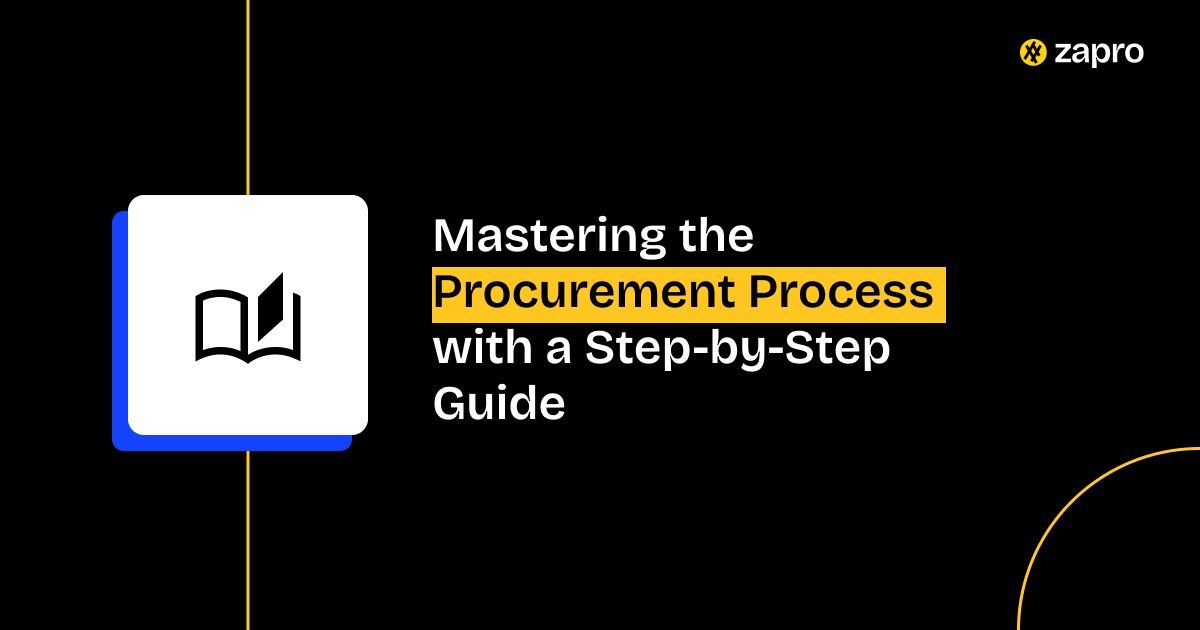
 Healthcare
Healthcare Financial Services
Financial Services Technology
Technology Venture Capitalist
Venture Capitalist Chief Procurement Officer
Chief Procurement Officer Chief Financial Officer
Chief Financial Officer